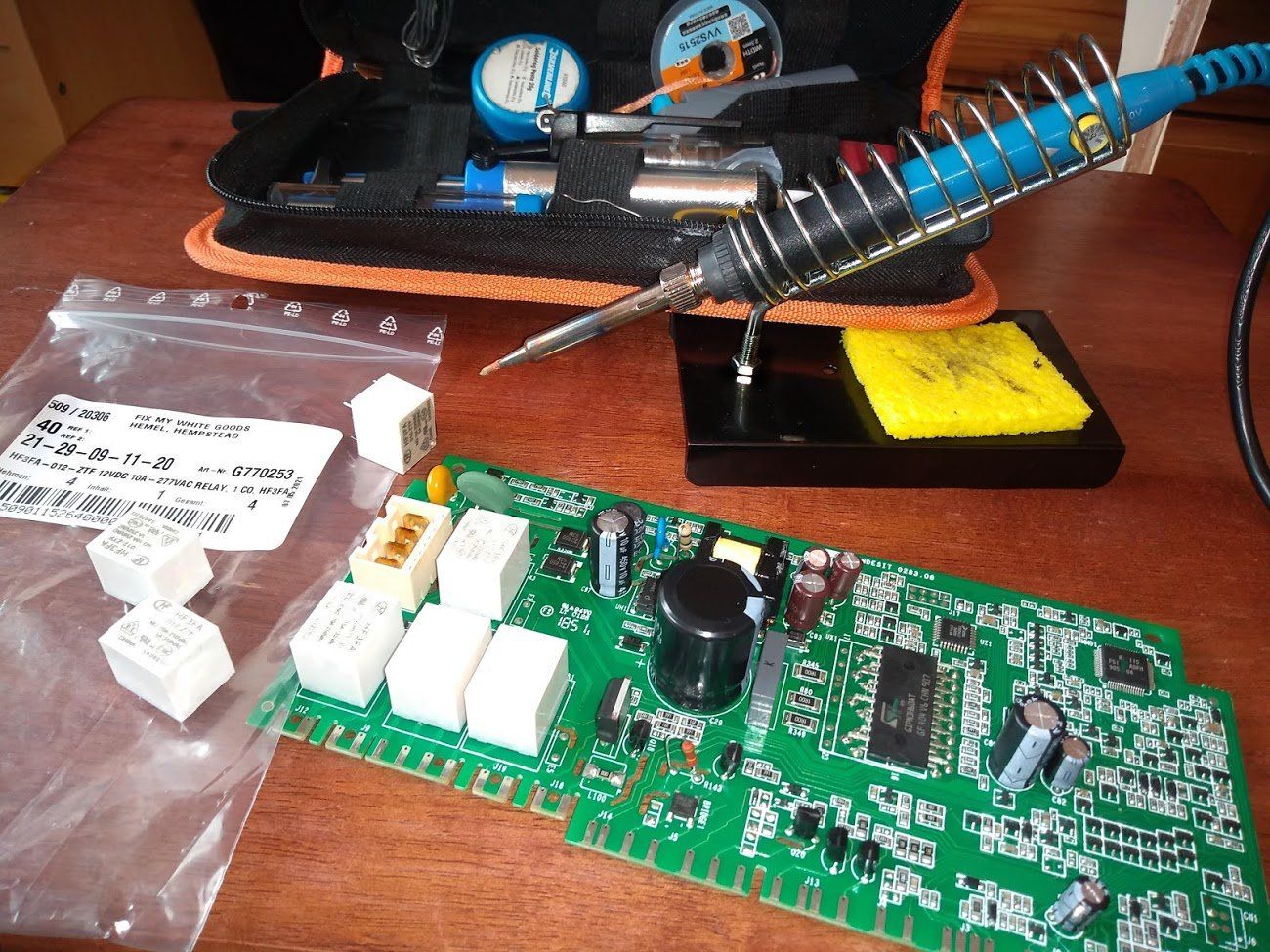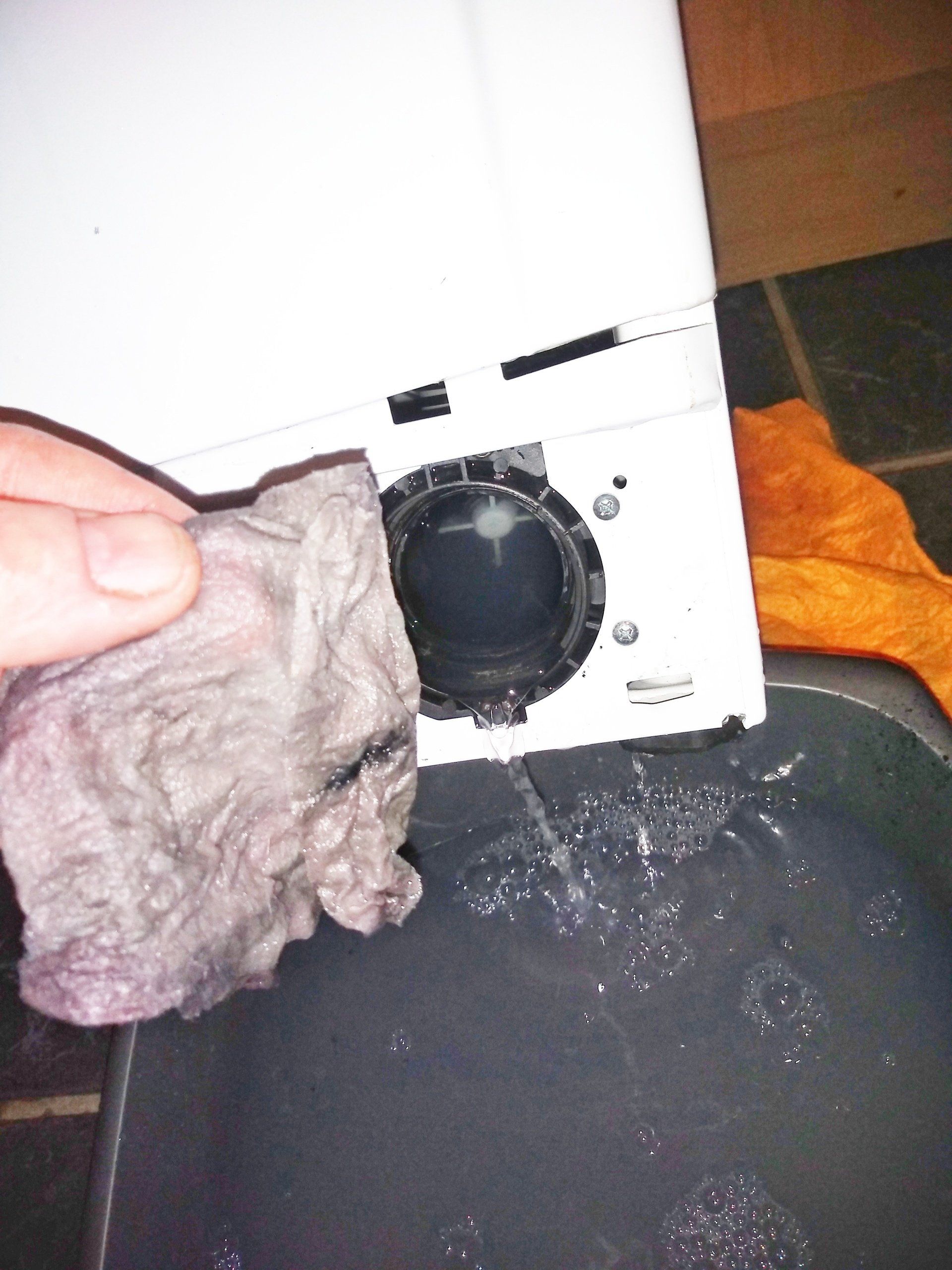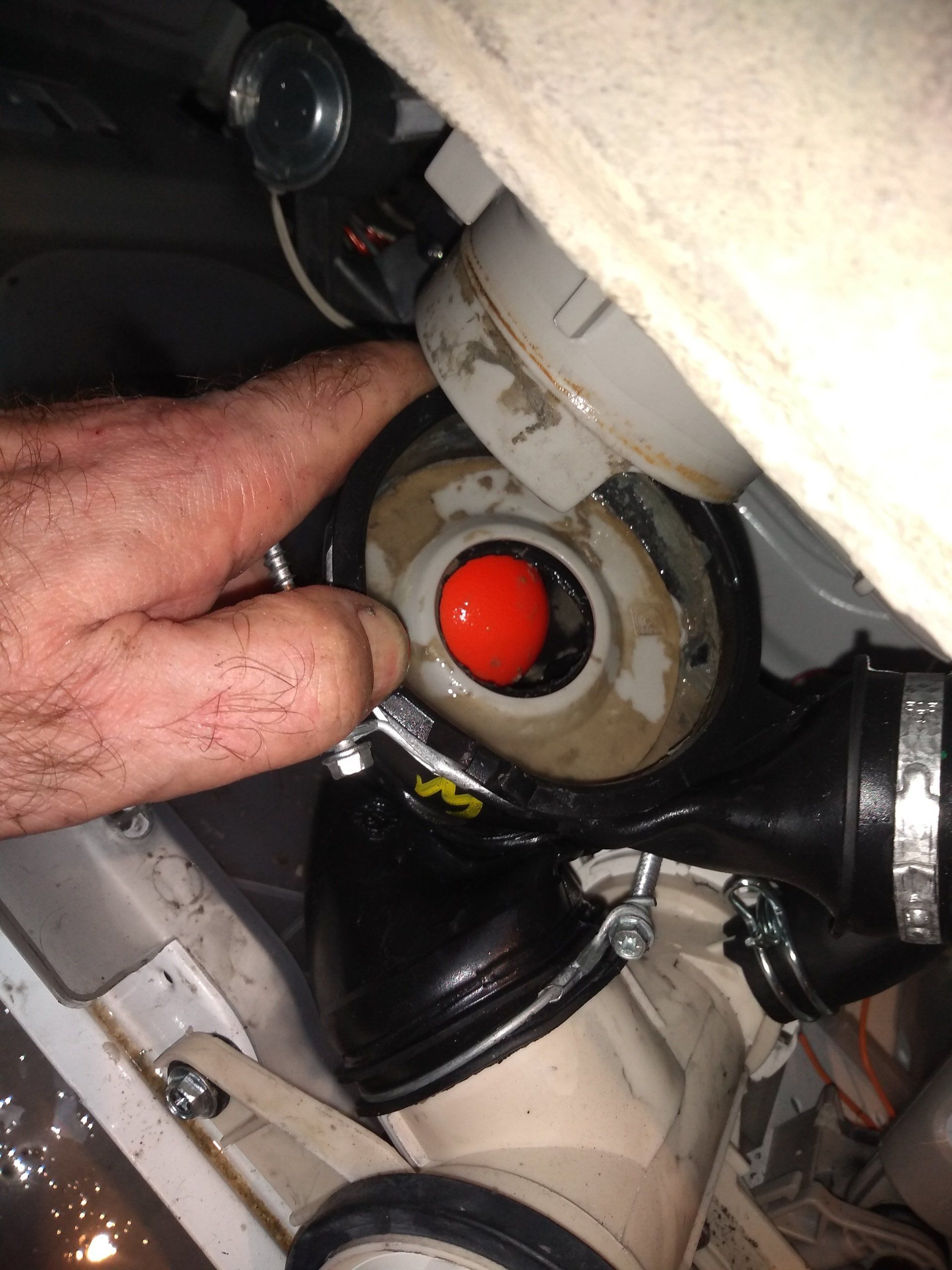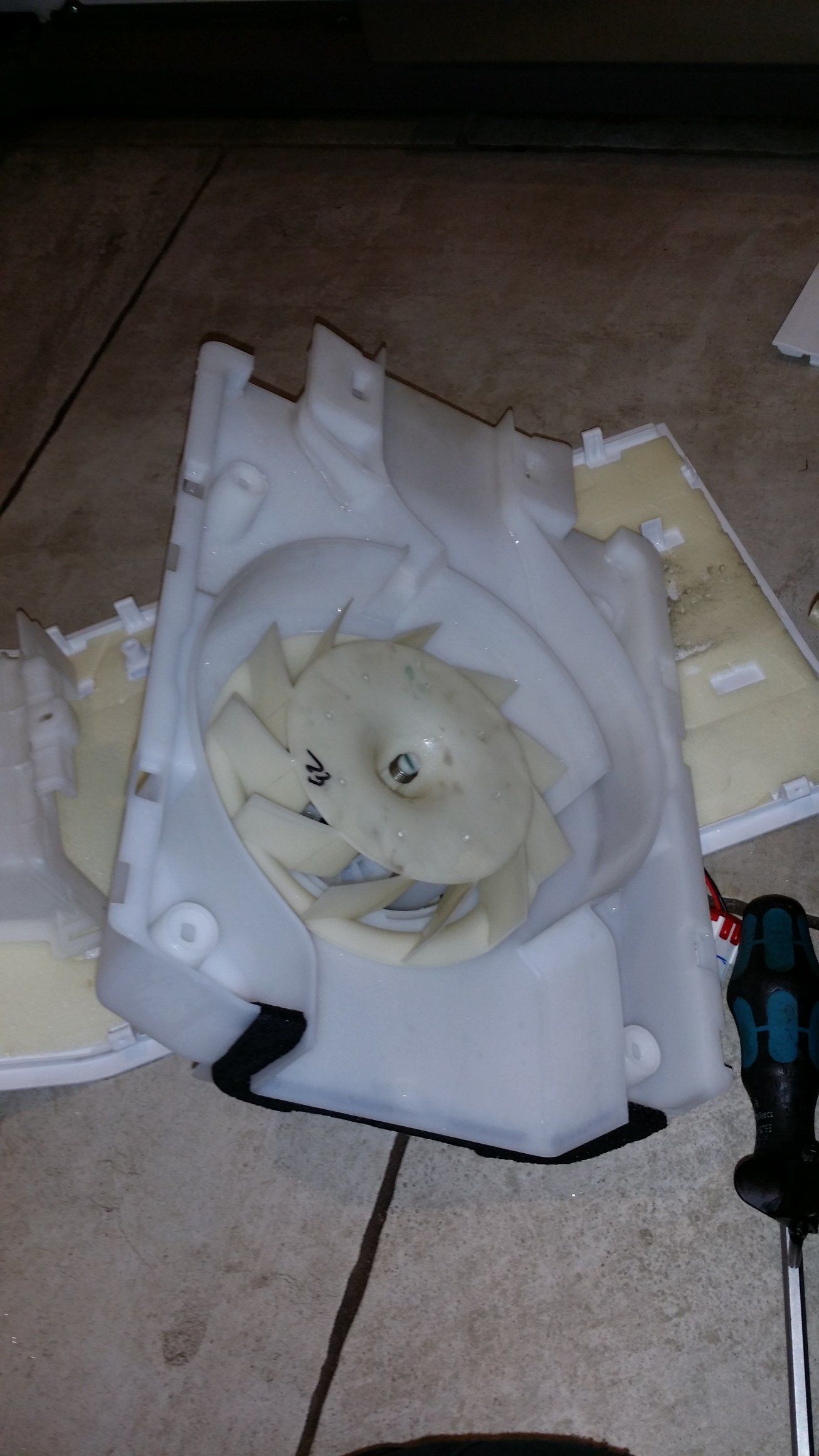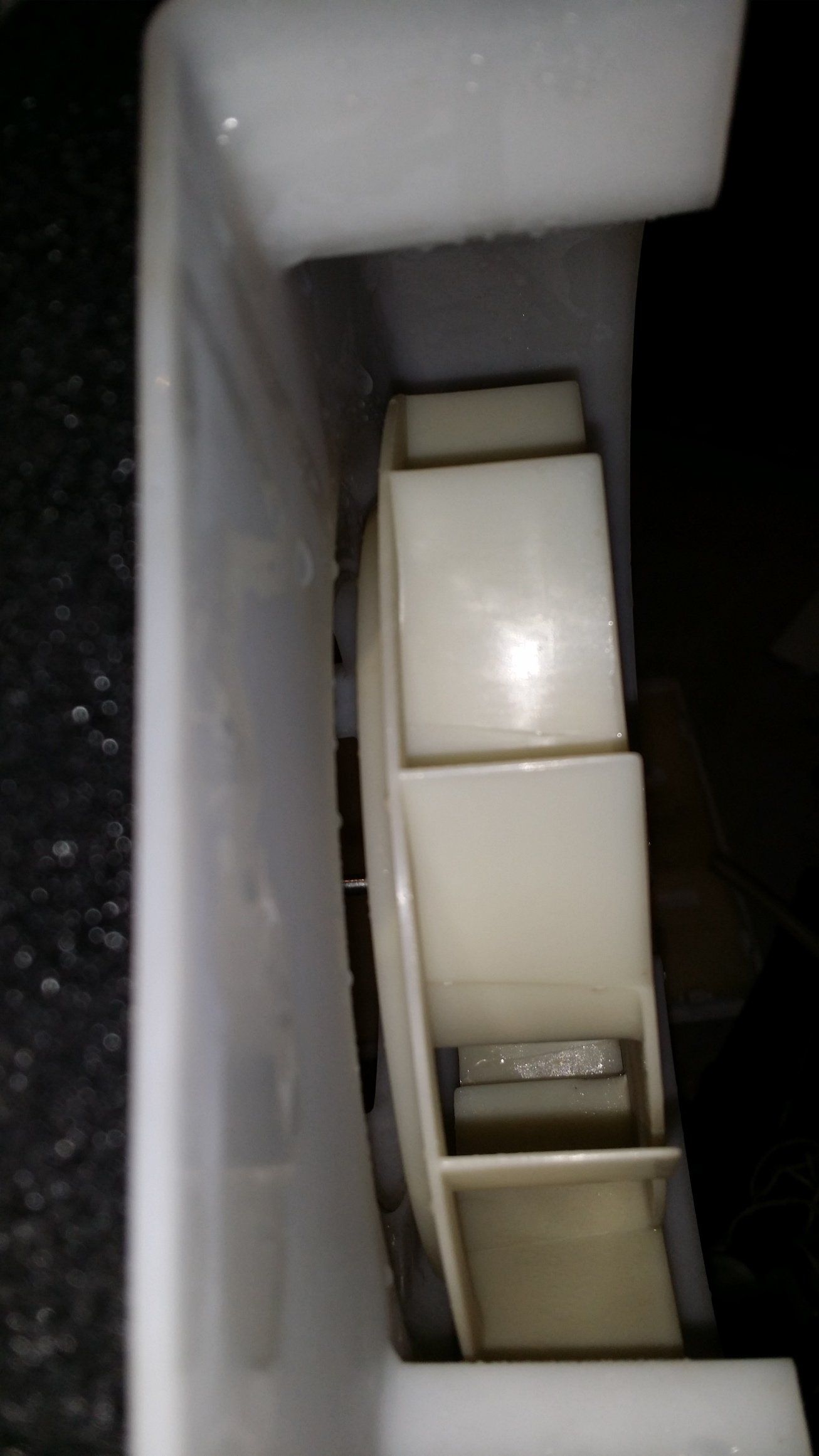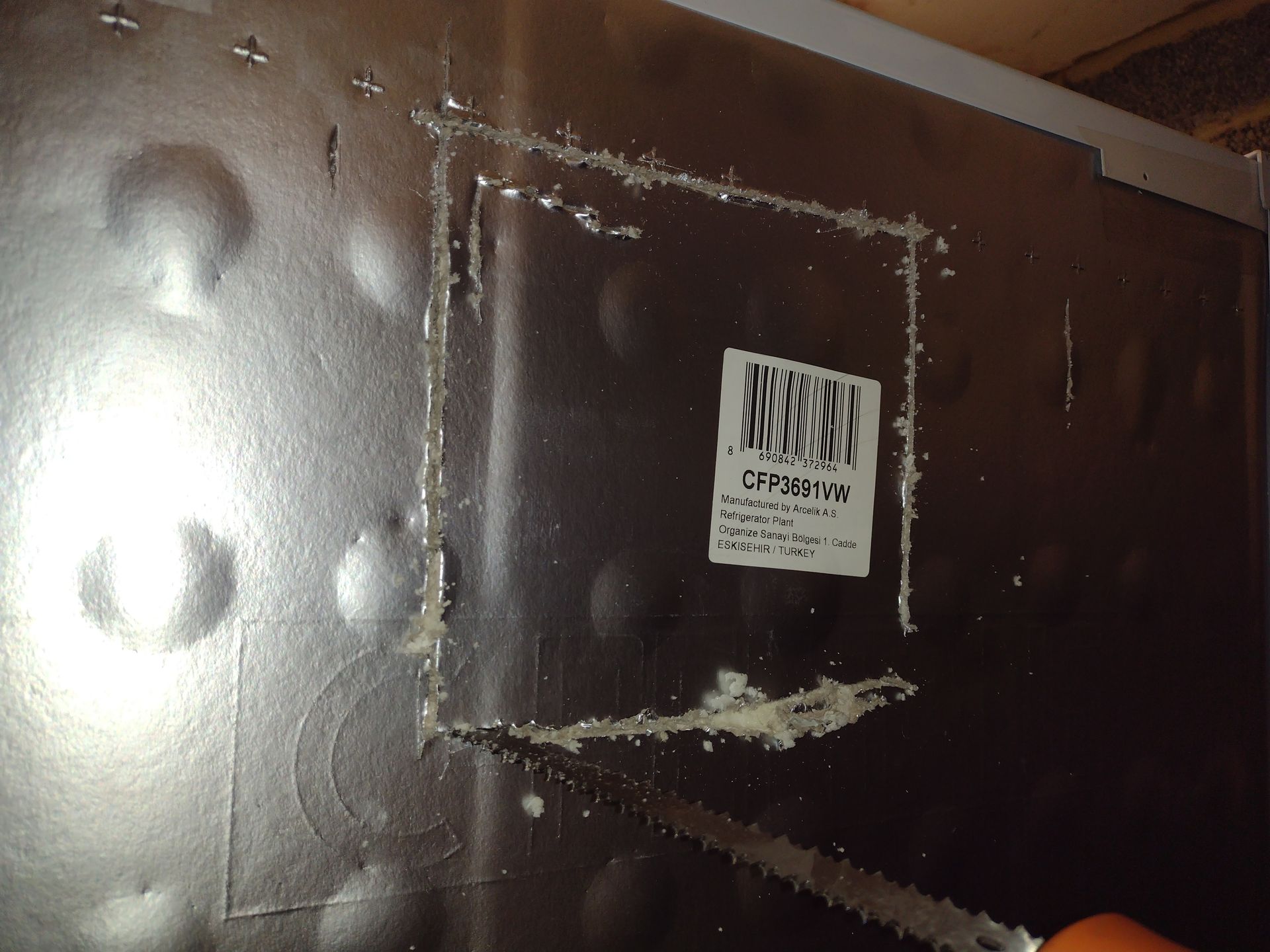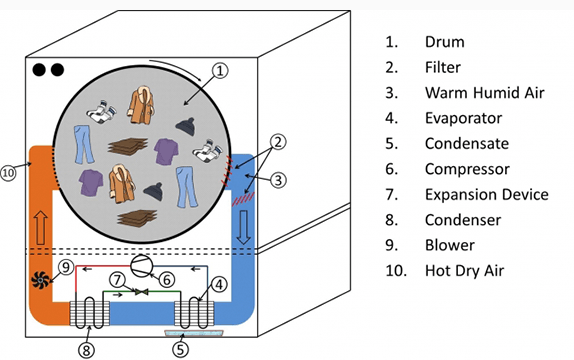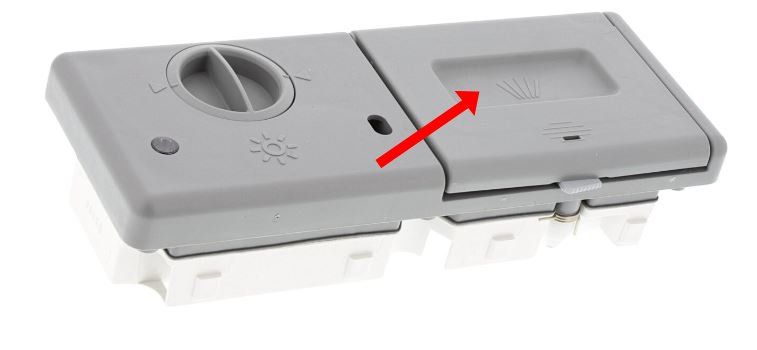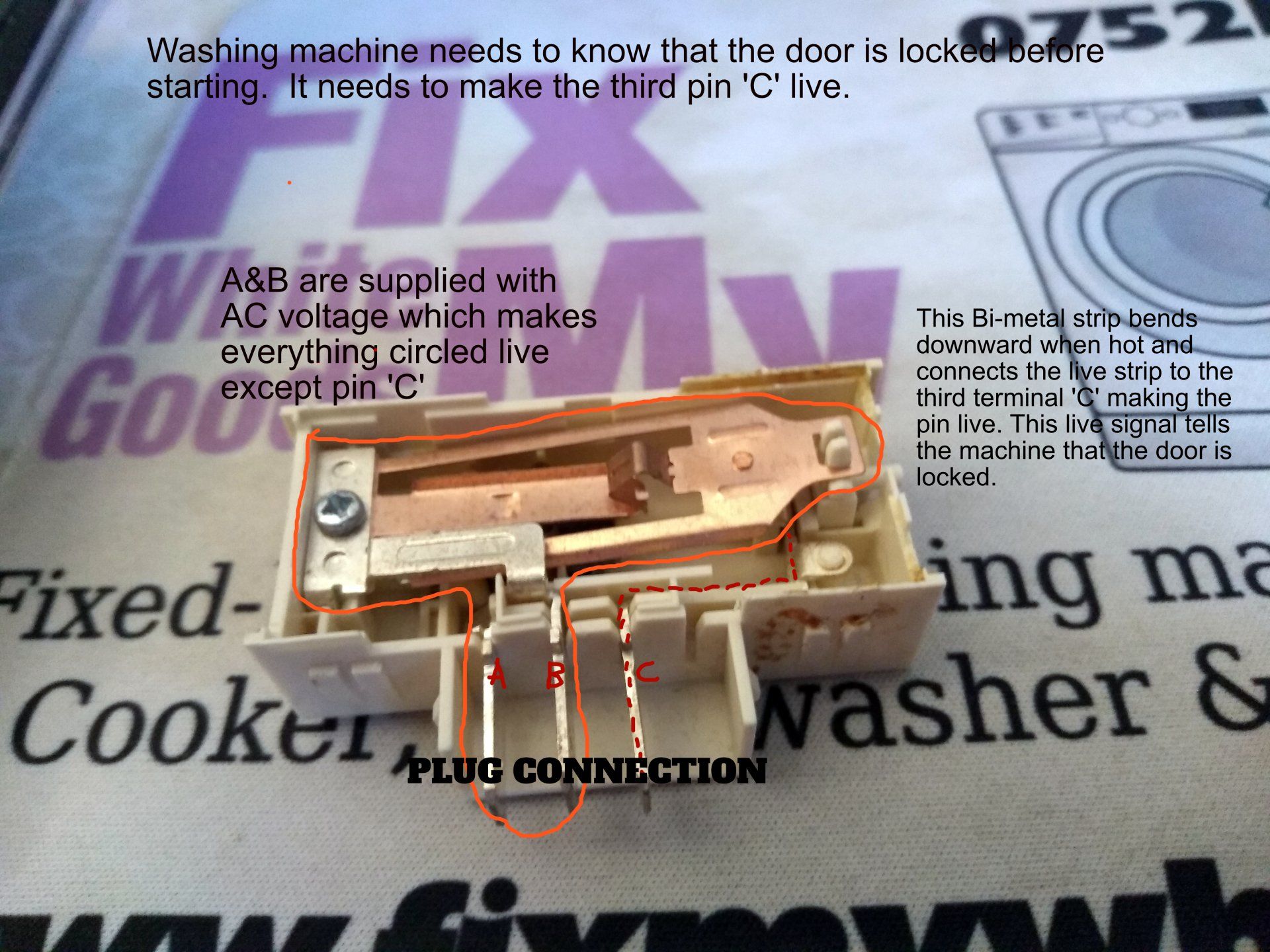Another repair not requiring parts
A noisy fridge-freezer only needed a slight adjustment to its internal fan. It required a second visit, unfortunately, but all was well in the end!
A few days ago, I attended an American-style fridge-freezer which was noisy. The customer said that the noise would stop immediately upon opening of the freezer door, and continue once the door had been closed.
I had visited this appliance some days previously as it had been making a similar, but louder noise. At the time I visited, the noise had actually stopped, but knowing that the noise was stopping with opening of the freezer door, I knew that it must be the fan inside the freezer section, as the freezer fan is the only constantly moving part inside the freezer, and it is designed to stop immediately upon opening of the freezer door.
I cleared out a build-up of ice in the fan and ducting, and ran the appliance. It was completely silent now. I had assumed that the problem had now been resolved, but I asked the customer to let me know if the noise returned. The next day, I received a call saying that the noise had in fact returned, although not so noisy since my visit.
I told the customer that I would need to re-visit, and the customer booked a date online using our online booking system. I revisited on the day the customer had booked, and stripped down the freezer section back panel by removing the ice maker, drive motor, back panel and fan assembly.
On inspection of the fan assembly, I found that the ice build-up had caused the fan to bend slightly into a position where it was now very lightly brushing against the back panel, causing the noise.
Repairing it was a simple matter of moving the fan a few millimetres forward on its shaft to allow a sufficient clearance so that the fan no longer touched the plastic at the base of the fan.
The repair required no parts, and involved a simple adjustment. I was happy to revisit and make good the problem. Since it was a revisit to the same repair, there was no additional call-out or labour cost to the customer.
